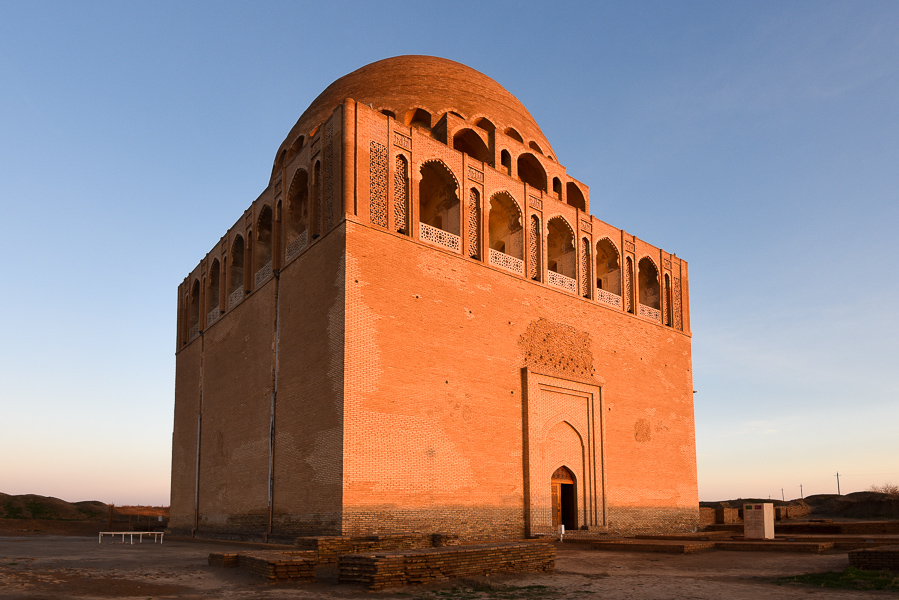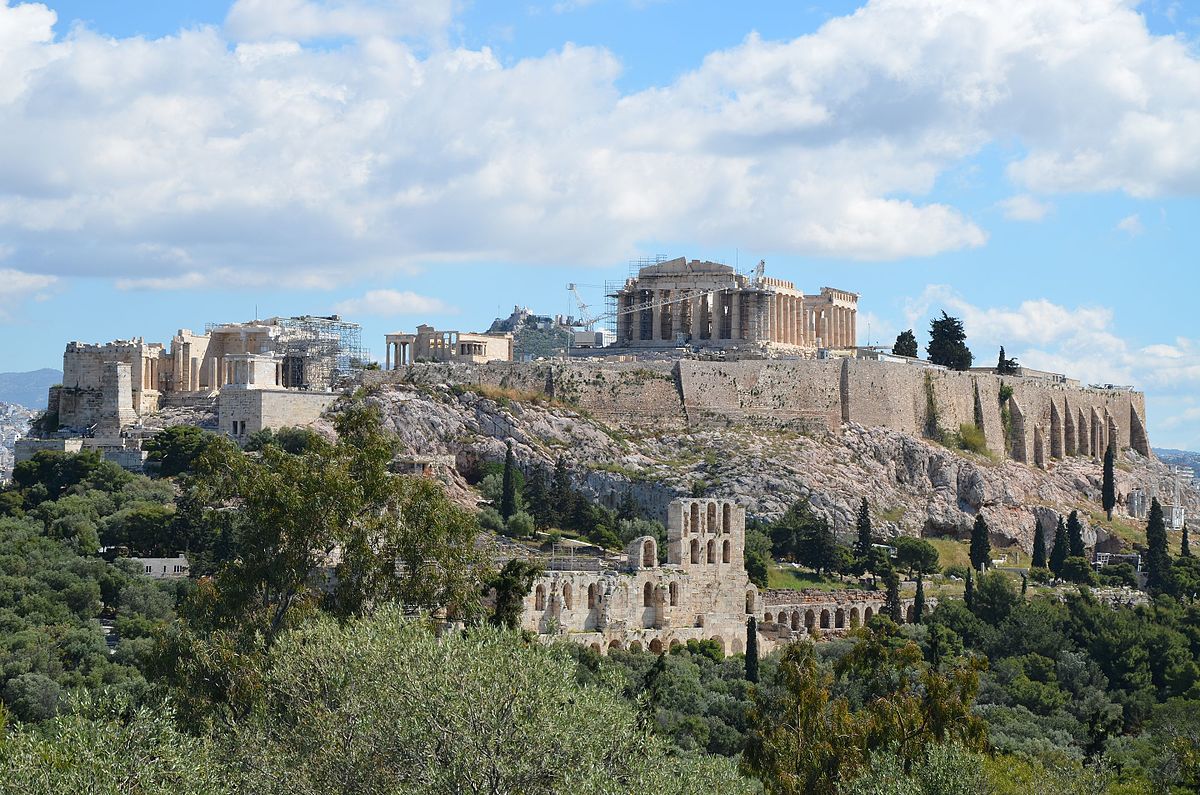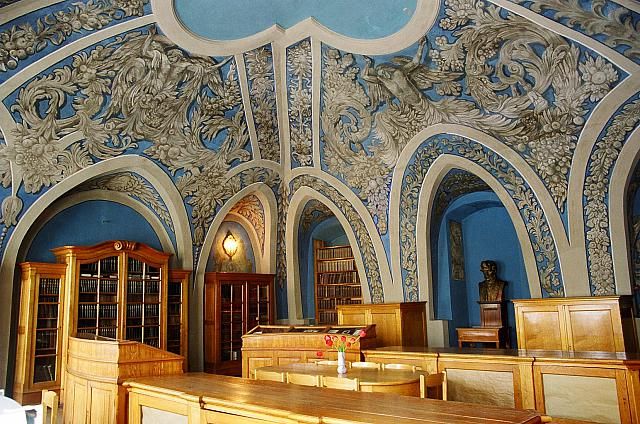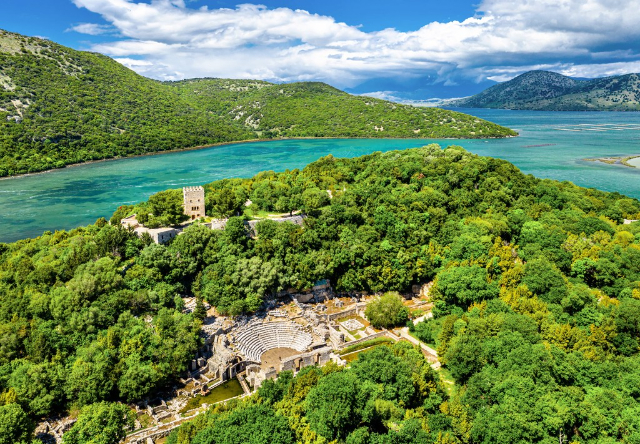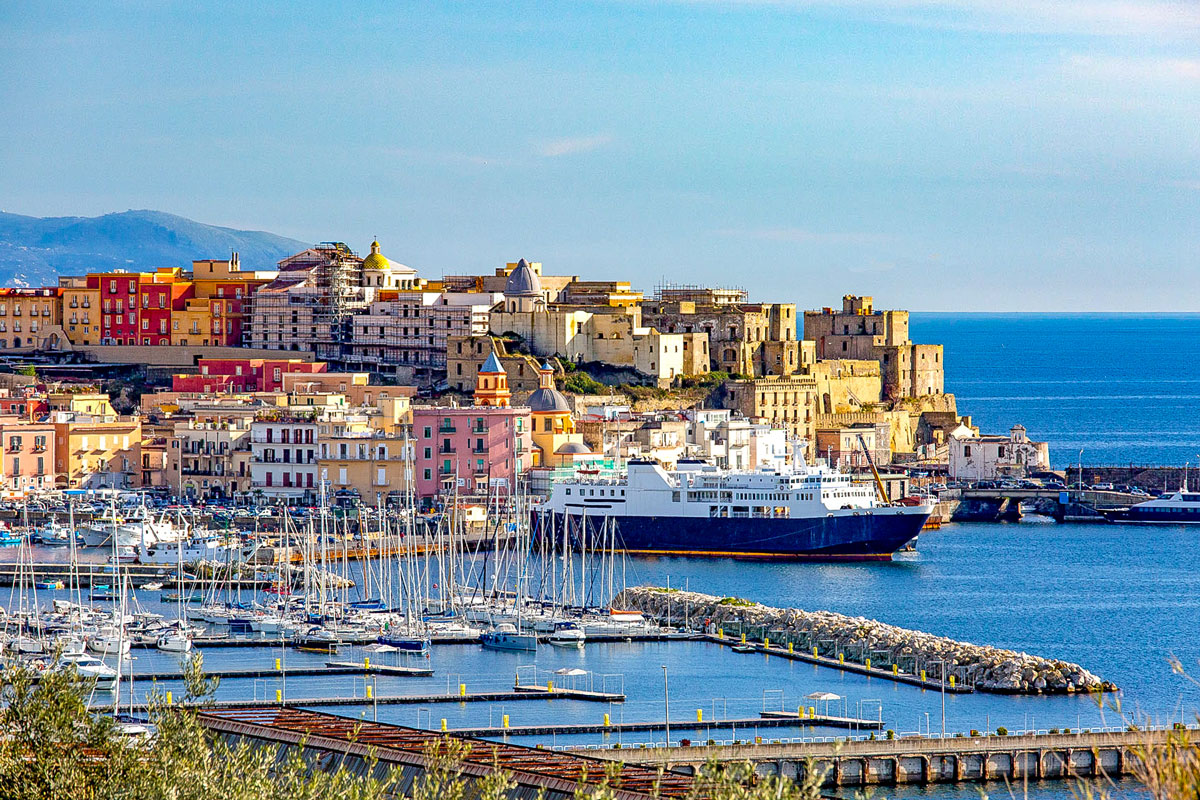First real sight in the park is the Mausoleum of Sultan Sanjar. It has been almost completely restored with the help of Turkish funds. This is the building that you will see in the distance over and over again from different corners of Merv park.
It was built in 1157. Throughout his reign, Sanjar fought off several invasions and uprisings until finally being defeated by the Oghuz.
After being sacked by the Oghuz, Merv declined and in 1221, the Mongols attacked it and burned down the mausoleum. It would later be restored by Soviet, Turkmen, and Turkish architects during the 20th and 21st centuries. The tomb is part of The State Historical and Cultural Park "Ancient Merv", a UNESCO World Heritage Site.
The tomb was built by Sanjar’s successor, Muhammad ibn Aziz, along the Silk Road. It is shaped like a cube with a dome on top, which is 27m high.
The walls are 14m high, and the entire dome is 17m by 17m wide.
Despite its restorations, the Tomb is still missing features such as its second story, the turquoise covered outer dome, and the surrounding buildings in the complex. Albeit in ruins, the tomb is one of the few surviving examples of secular Seljuk funerary architecture. Its squat proportions and hexadecagonal surrounding of the outer dome would influence later works of architecture.
